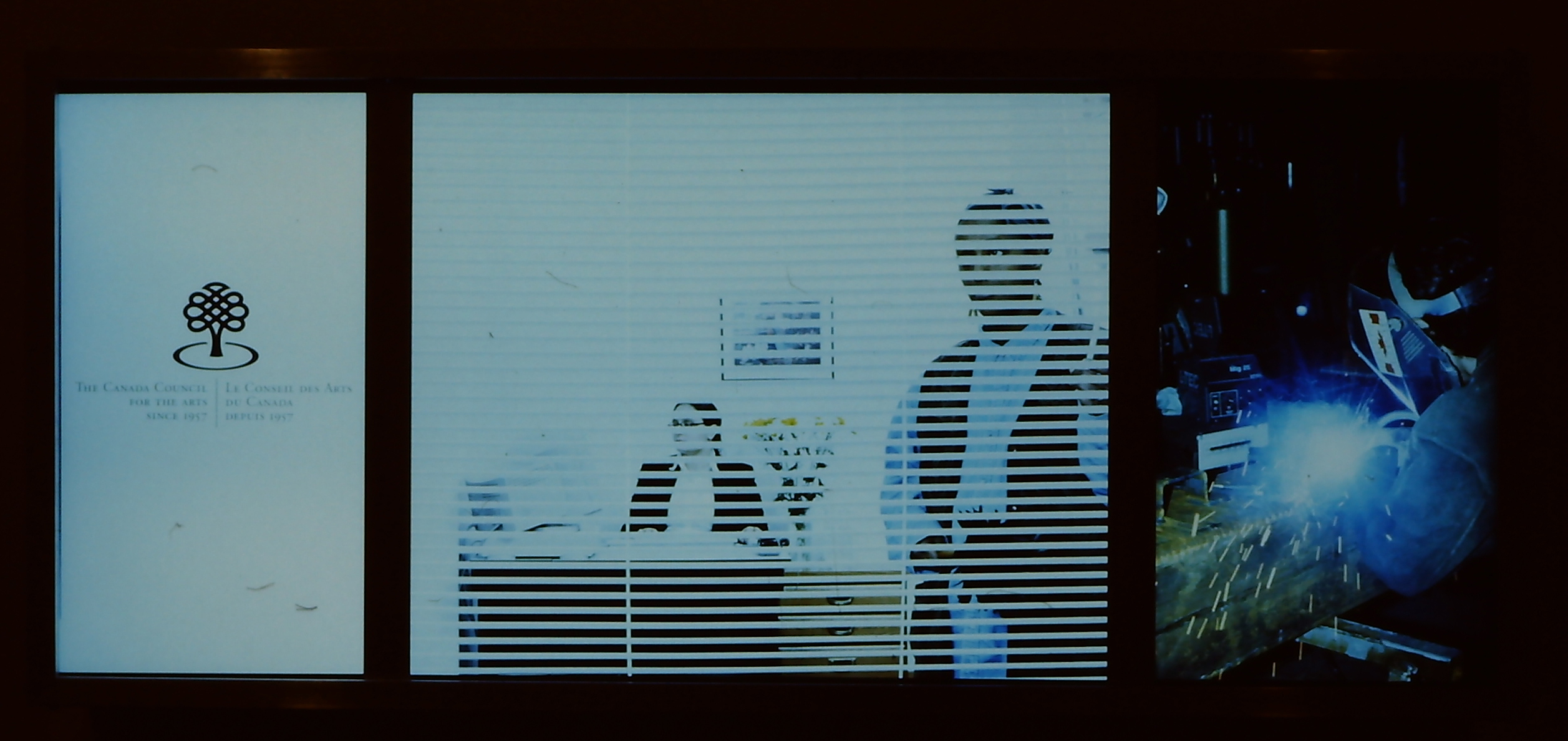Is it safe to suggest that art, in all forms, questions authority? As our century draws to a close, we can glance back to the beginning and notice that each movement that emerged perceptually delved into the realm of inventing new ideas, ideals and canons. Verge on 7, the 1999 Emerging Artists Exhibition at Gallery 101, brings together 7 artists who revalidate authority in such forms of information, capitalism, semiotics, and power. The need to re-examine authority and power, which in our society, comes in the all pervasive form of capitalism, is explored in the work of David Hill, Peter Urchak, Paul de Guzman, and Maureen Sandrock. Hill’s piece, Annunciation, uses the tradition of the Renaissance triptych to understand the radical direction that our society has taken towards technology. By using corporate logos, Hill equates the religious level of this computer-based age to the religious society of the Renaissance. Urchak also makes a religion inference in Altar, in which he directly points at how power results in social control. The process of dissecting information about art in media and enclosing it within frames is de Guzman’s method of reevaluating the manner in which this information is consumed and distributed. Sandrock’s sculptures epitomize the result of capitalism in our society where even our hearts, kidneys, bones, and livers are commodifiable objects. Her sculptures are tragic, fragile, and precious, both as political commentary and aesthetic beauty. While authority and power are scrutinized, the overwhelming need to explain our culture is further dealt with by Chuck Sands, Rand Berthaudin, and Christopher Davidson, who take a semiological approach. Sand’s paintings, on one level, create a system of signs, a or a personal language. Dark lines appear to be placed randomly, however they act as both a barrier between the colour-field, and as a sign for the viewer who may chose to read them, or analyze them purely in a formal category. Berthaudin’s photographs of oil stains in a parking garage portray a similar system of signs which Sands paints. The oil stains are a language of urban presence and absence, and within each oil stain, exists a story of its creation. Davidson takes more of a methodological stance in his magnified photograph of the eyes of a woman. He attempts to reverse the traditional male gaze in order to supply the female with the power to objectify (oppress). Quite a feat for a male photographer. The purpose of organizing this juried exhibition is to create a critical context for works that share a questioning approach. In doing so, Gallery 101 continues to be a site for critical practices that do not always find recognition among the public, even though the questions raised by the artists are often of general concern.
Swapna Tahmane
